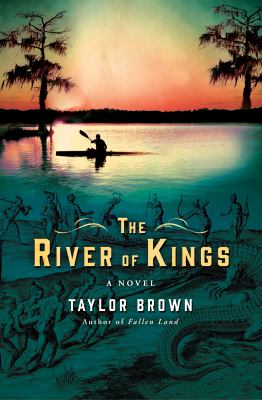Lawton and Hunter Loggins are brothers in their twenties, one a Navy Seal, the other in college. After their father’s death, they set out on a kayaking trek, navigating the wilds of Georgia’s Altamaha River to a specific place where they intend to empty their dad’s ashes.
college. After their father’s death, they set out on a kayaking trek, navigating the wilds of Georgia’s Altamaha River to a specific place where they intend to empty their dad’s ashes.
As we travel with Lawton and Hunter, two other tales intertwine with their story – that of their father in his earlier days, and that concerning the first French settlers of this area of southeast Georgia.
Hiram Loggins was a harsh man – unlucky with shrimp boats and the law, and in love with the wrong woman. As the brothers grew up, he raised them hard and tender – hard with the physical abuse, and tender in the ways that he taught them to revere the Altamaha and its swampy terrain. It is to this river that they fare, to do their unforgiving dad one last favor.
The third strand of the book concerns the settlement of Fort Caroline, begun by the French in 1564. Varying alliances with natives and clashes with the Spanish ultimately spell doom to the settlement. The main character here is Jacques Le Moyne, an artist charged with rendering the sights of the new world with his sketches.
Le Moyne was an actual person; facsimiles of his works illustrate the book. The River of Kings plays on the proposal that Fort Caroline was situated on the Altamaha rather than the St. Johns River; a theory about this came out about three years ago.
The area of the Altamaha in all three storylines is rich with myth, including the accounts of a mysterious aquatic creature that inhabits the lower reaches of the river. The French hear tales of it from the natives, and Le Moyne is obsessed with seeing the creature, if anything to sketch it. The monster also plays into Lawton and Hunter’s story – Lawton especially believes that their father was aware of the creature. Their leg of the book is its own odyssey, a hero’s journey of siblings and their discovery of each other, while keeping sharp eyes on the dangers of the river, should they be river monster or two-legged nemesis.
(William Hicks, Information Services)
Filed under: Fiction | Tagged: Altamaha River -- Georgia -- Fiction, Brothers -- Fiction, French Settlement in North America -- Fiction | Leave a comment »

